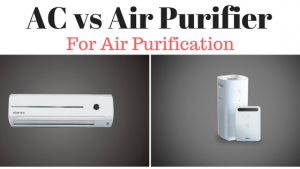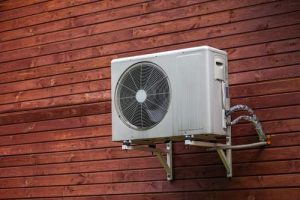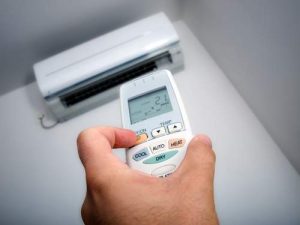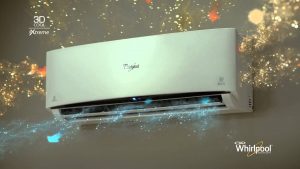Comparison of various refrigerants (R-410A, R-22, R-32, R-290, R-134A, R-600A) used for Air Conditioners and Refrigerators
While growing up in the 1990s I used to hear a lot about CFCs (or chlorofluorocarbons) and their involvement in depletion of ozone layer. There were talks that all the refrigerants that cause environmental harm will be phased out. But as the years passed by, the thought of checking if a refrigerator or air conditioner that is being purchased has environmentally friendly refrigerant or not, vanished, as the presumption was that the CFCs have been phased out and we only get environmentally friendly refrigerants these days. But is that true? Or do we really care? In this article, we will look at various refrigerants that are used in air conditioners and refrigerators that are available in Indian market.
What is a refrigerant?
A refrigerant is a fluid that is used in air conditioners and refrigerators, to take heat from the contents of a refrigerator or the room (in the case of ACs) and throw the heat out in the atmosphere. A refrigerant undergoes phase changes from a liquid to gas (on absorbing heat) and back to liquid (when a compressor compresses it). The choice of ideal refrigerant is made based on its favorable thermodynamic properties, non-corrosive nature, and safety (non-toxic and non-flammable). Although many fluids can be used to act as a refrigerant, but in 20th century, CFCs became the most popular refrigerants.
Old and Modern refrigerants
The most common refrigerant in the past was a CFC, most commonly called as Freon. Freon was a brand name for a refrigerant “R-12” by DuPont. In the 1990s and 2000s, the CFCs were replaced with HCFCs (hydrochlorofluorocarbon) and the most common HCFC is “R-22”. 50-60% of Air Conditioners in India still (in 2016) use HCFCs. However, HCFCs are just marginally better than CFCs as they contain chlorine, which is harmful for the environment. As per Indian Government’s plan, HCFCs will be phased out from India by the year 2030.
To remove chlorine from the refrigerant, manufacturers created another set of refrigerants called HFCs (or Hydro Fluro Carbons). Although they also have the potential for global warming, but still they are better than HCFCs as they do not deplete the ozone layer. The most common HFC used in air conditioners is R-410A. This refrigerant is better than R-22 in terms of “Ozone Depletion” potential and energy efficiency, but it still causes global warming. A few more HFCs that are commonly used are: R-32 in Air Conditioners and R-134A in refrigerators. About 20-30% of the air conditioners in India still (in 2016) use HFCs. R-32 is better than R-410A in terms of global warming potential, but then it is still an HFC. As per latest news, India plans to phase out HFCs as well in next few years, and the timeline for it is still under consideration.
The most environment-friendly refrigerants that are available in Indian market currently are “R-290” and “R-600A”. They are HC or Hydrocarbons, and their chemical names are “Propane” for R-290 and “Iso-Butane” for R-600A. They are completely halogen free, have no ozone depletion potential and are lowest in terms of global warming potential. They also have high-energy efficiency but are highly flammable as they are hydrocarbons. But they are the greenest refrigerants in the market. Manufacturers, who use these refrigerants, claim that they have taken good care in using these refrigerants and the appliances are absolutely safe. In fact, most refrigerators in the Indian market are now on R-600A and there are no reported incidents of any accidents due to the same. So we can comfortably believe that they are safe.
Below is the data for Global Warming Potential of various refrigerants (source):
| Refrigerant | Global Warming Potential | Ozone Depletion Potential |
| R-22 | 1810 | Medium |
| R-410A | 2088 | Zero |
| R-32 | 675 | Zero |
| R-134A | 1430 | Zero |
| R-290 | 3 | Zero |
| R-600A | 3 | Zero |
Conclusion
If you are someone who cares about energy efficiency and global warming, go for an Air Conditioner with R-290 or a Refrigerator with R-600A. The more you opt for it, the more the manufacturers will start using them in their appliances. Hopefully, with stringent standards and better advancements in technology, we will be able to see better refrigerants in future.
Check this link to see Top Ten Air Conditioners in India for Electricity Savings: http://wp.me/p4hAhQ-4I
About the Author:
Abhishek Jain is an Alumnus of IIT Bombay with almost 10 years of experience in corporate before starting Bijli Bachao in 2012. His passion for solving problems moved him towards Energy Sector and he is keen to learn about customer behavior towards Energy and find ways to influence the same towards Sustainability. More from this author.






